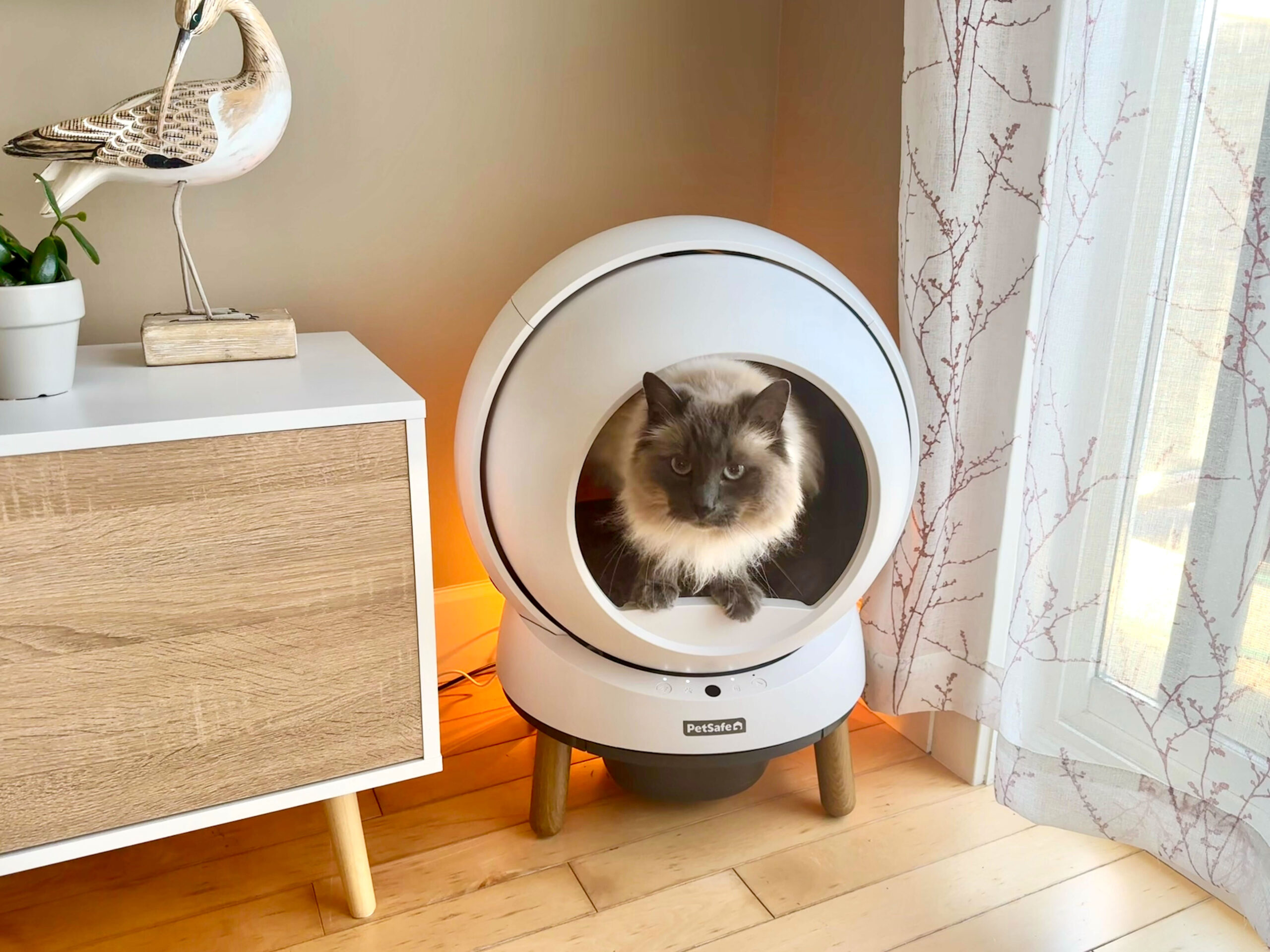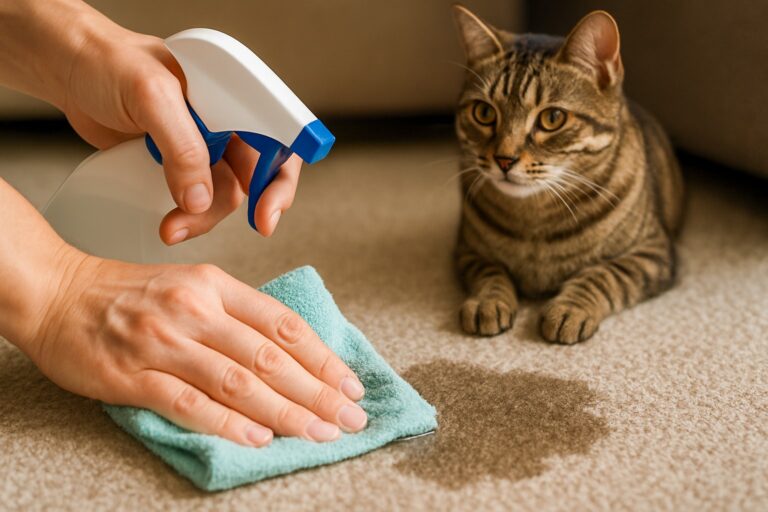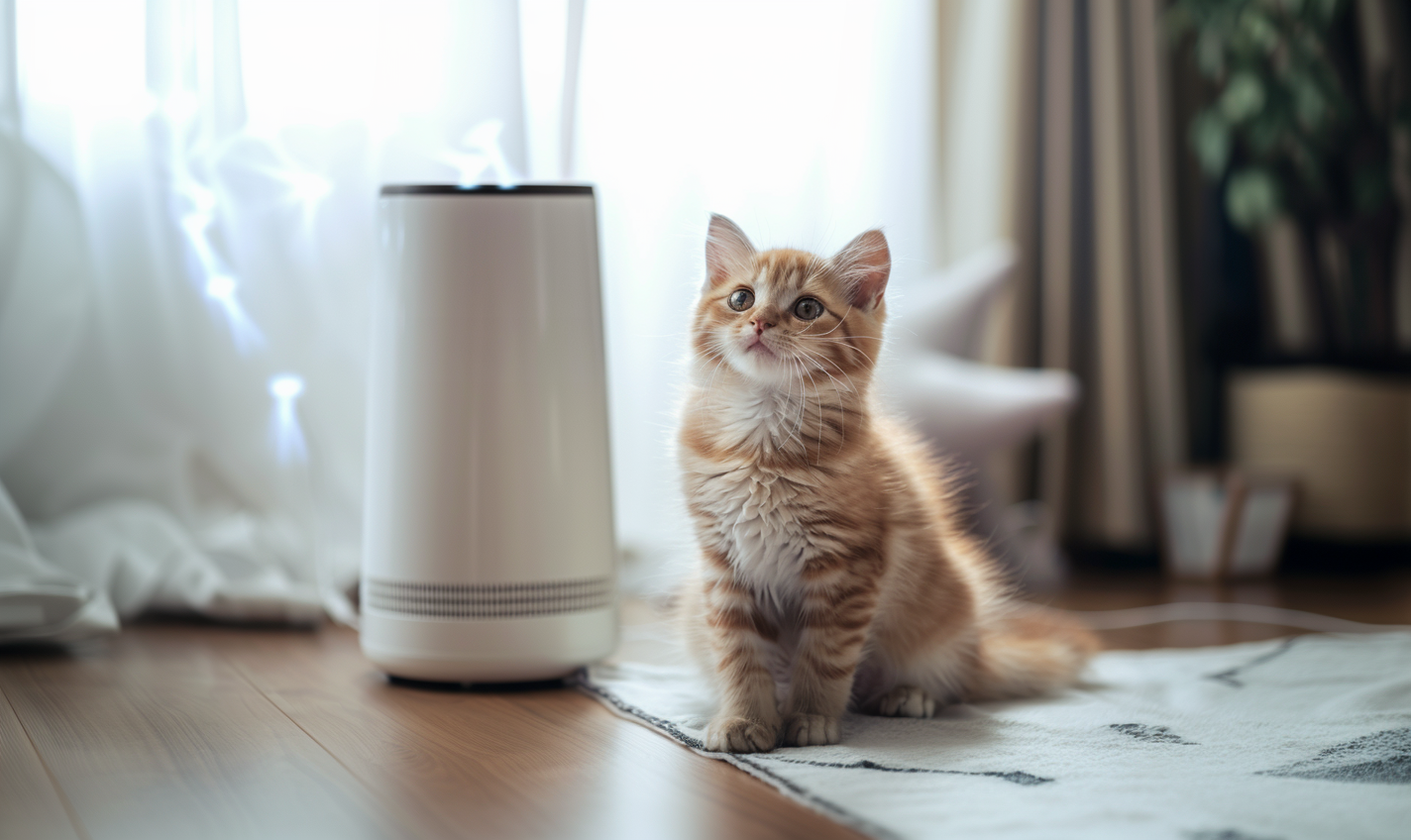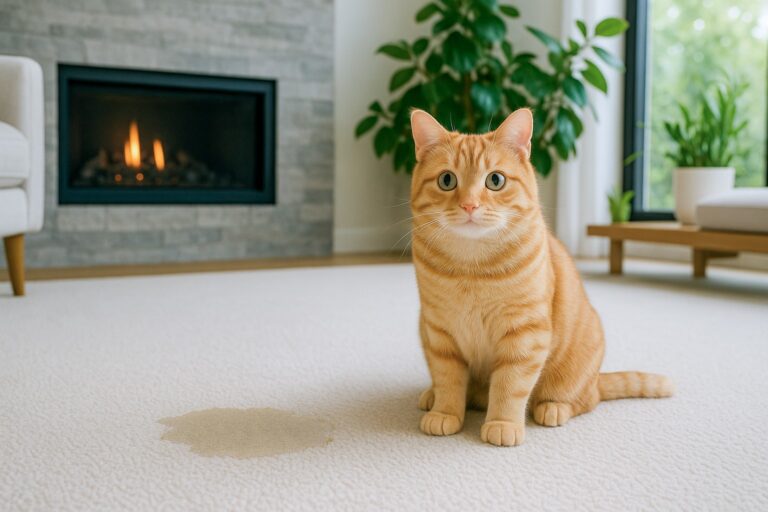If you’ve ever dealt with cat pee, you know the struggle is real. It’s not just a bad smell—it’s a smell that clings. Even after a deep clean, it can feel like the odor is still lurking, ready to come back the moment the room heats up.
That’s because cat urine contains a unique mix of proteins and uric acid crystals that bond to surfaces and resist regular household cleaners. The good news? With the right tools and techniques, you can get rid of it—for real. In this article, we’ll walk you through what works, what to avoid, and how to stop future accidents from happening.
Why Is Your Cat Peeing Outside the Box?
Before you grab the scrub brush, it’s worth asking why your cat is peeing somewhere they shouldn’t. Cleaning is important, but if the underlying cause isn’t addressed, the behavior could keep happening—and so will the smell.
Check for Medical Issues First
Sometimes, the reason is medical. Urinary tract infections, kidney issues, or diabetes can cause discomfort or urgency that makes your cat avoid the litter box. If this behavior is new or happening frequently, a vet check is the first step.
Evaluate the Litter Box Setup
Cats are particular about their litter habits. A dirty box, the wrong type of litter, or even the box’s location can all be reasons they go elsewhere. Some cats dislike covered boxes, while others feel too exposed without one. You may need to experiment a little to find what your cat prefers.

Pro Tip!
If you’re having trouble keeping up with scooping, consider investing in one of the best self-cleaning litter boxes.

Consider Stress or Territory Marking
Stress and territory marking can also be triggers. A new pet, visitor, or change in routine can throw your cat off. Even a lingering odor from a previous accident can cause them to return to the same spot if it isn’t cleaned thoroughly.
The Right Way to Remove Cat Pee Smell
Once you’ve found the source, here’s how to tackle it effectively—from fresh accidents to stubborn, set-in smells.
- Blot, don’t scrub.
Use paper towels or a clean cloth to gently blot up as much of the urine as possible if it’s fresh. Scrubbing can push it deeper into fabric or carpet fibers. - Use an enzymatic cleaner.
These are your best bet for truly breaking down uric acid—the part of cat urine that causes the lingering smell. Look for pet-specific enzyme cleaners like Nature’s Miracle, Rocco & Roxie, or Simple Solution. - Let it sit.
Enzyme cleaners need time to work. Saturate the area, then let it sit for at least 10–15 minutes (or longer, per the label). Avoid wiping it up too quickly. - Rinse and repeat, if needed.
Some areas—especially carpets and mattresses—may need multiple applications. Don’t get discouraged if it takes more than one round. - Try a blacklight for hidden spots.
If the smell persists and you can’t find the source, a UV blacklight can help you detect old or hidden stains (they glow yellow-green in the dark). - Air dry and ventilate.
Open windows, use a fan, or set items outside if possible. Proper airflow helps neutralize odors and speed up drying.

Specific Surfaces & Solutions
Not all surfaces handle cat pee the same way. Some materials soak it up like a sponge, while others need a gentler touch. Here’s how to handle the most common offenders:
Upholstery
For couches, chairs, and other soft furniture, start by removing any covers (if possible) and blotting up fresh urine. Apply an enzymatic cleaner liberally to the affected area and let it soak through the padding. Air drying is key—use fans or open windows to help speed the process.
Carpets & Rugs
Thorough saturation is essential here. Urine tends to soak below the surface, so your cleaner needs to reach all the way down. Apply your enzymatic solution generously, let it sit, and avoid using steam until you’re sure the odor is gone. A second application may be needed.
Clothing & Bedding
Soak fabrics in an enzymatic solution (or a mix of water and enzymatic cleaner) for at least 30 minutes before tossing them into the washing machine. Avoid hot water, which can set the smell. Air dry if possible—don’t use a dryer until you’re sure the smell is gone.
Hardwood or Tile Floors
Urine can seep into the seams of hardwood or grout. Use a gentle enzymatic cleaner designed for hard surfaces, and avoid over-saturating wood to prevent damage. Always test a small area first, especially with natural or untreated wood.
Mattresses
These require a layered approach: blot, enzyme soak, repeat. Use towels or gentle pressure to draw moisture out between applications. Once treated, sprinkle baking soda on the area after it dries to help absorb any lingering odor before vacuuming.
Tried-and-True Product Recommendations
When it comes to removing cat urine, not all cleaners are created equal. Here are a few reader favorites that actually get the job done:
A powerful enzymatic cleaner that’s great for carpets, furniture, and more. Get it here.
Formulated specifically for the potent smell of cat pee. Get it here.
A go-to for multi-cat households and high-traffic areas. Get it here.
Helps you find hidden pee spots you might miss otherwise. Get one here.

Pro Tip!
While air purifiers won’t remove the source of the odor, they can help destroy the free-floating particles that linger even after a good cleaning. Check out our picks for the best Best Pet Air Purifiers For Cat Owners.

Quick Tips & Tricks That Actually Work
Sometimes, it’s the small adjustments that make the biggest difference. Here are a few smart, crowd-approved tricks to help beat the stink and stop the cycle:
- Baking soda + vinegar = backup plan.
If you don’t have an enzymatic cleaner on hand, saturate the area with white vinegar, let it sit for 10 minutes, then blot and sprinkle baking soda. Let it dry completely before vacuuming. Not as powerful as enzymes, but helpful in a pinch. - Use foil or double-sided tape as deterrents.
Cats hate how it feels under their paws. Temporarily cover previously marked areas to prevent repeat visits while retraining. - Try a citrus or eucalyptus spray.
Cats tend to dislike these scents. Use a pet-safe version to lightly mist problem areas after cleaning thoroughly. - Switch to an unscented litter.
Strongly scented litters can actually deter some cats from using the box. Many do better with a low-dust, fragrance-free option. - Use a shallow bowl of vinegar to neutralize lingering room odor.
Set it out overnight (away from curious paws) in a room that smells funky. It won’t mask the smell—it actually helps absorb it. - Trim your cat’s paw fur if they track pee.
Long-haired cats can unintentionally carry urine out of the litter box on their feet. A quick trim helps reduce spread and future accidents. - Try a litter attractant additive.
Products like Elsey’s Cat Attract can encourage cats to return to the box if they’ve started avoiding it. - Always blot—never rub.
Rubbing spreads the stain and drives it deeper. Gently blot with clean paper towels or cloths instead.

How to Prevent Repeat Offenses
Once you’ve tackled the smell, the last thing you want is for your cat to return to the scene of the crime. Cats have an incredibly strong sense of smell, and if even a trace of urine remains, they may be tempted to mark the area again.
Start by making sure the spot is completely clean—using an enzymatic cleaner is key here. If the smell is gone to your nose but not your cat’s, a UV light can help confirm you’ve truly neutralized the area.
Next, make the location less appealing. Cats generally avoid citrus scents, so a pet-safe citrus spray can work as a natural deterrent. You can also block access to the area temporarily using furniture, double-sided tape, or a motion sensor.
Make sure you have enough boxes (the rule of thumb is one per cat, plus one extra), clean them daily, and experiment with litter types or box styles if accidents continue. Some cats prefer uncovered boxes, while others like the privacy of a lid.
Try using calming aids like pheromone diffusers or sprays if stress or changes in the household seem to be triggering the behavior. Keeping a consistent routine, offering safe hiding spots, and giving your cat positive attention can all help reduce anxiety-driven accidents.
Conclusion: A Fresh Start Is Possible
Dealing with cat pee is frustrating—we get it. But with a little patience and the right approach, you can eliminate the smell for good and stop the cycle of repeat accidents. Whether it’s your carpet, couch, or favorite hoodie, there is a way to get it truly clean. And by understanding the “why” behind the behavior, you’re setting your cat (and your home) up for a much fresher future.
Author
-
Hey there, I'm Jamey, and I've been an animal lover for as long as I can remember. Growing up on a 50-acre farm in Ontario, Canada, I was surrounded by a menagerie of furry friends, from beloved cats and dogs to goats, horses, cows, and even chickens. Now, I call Victoria, British Columbia my home, and my heart belongs to my adorable Balinese cat, Milo. When I'm not editing blog posts, I enjoy helping solo entrepreneurs with their passion projects and online marketing. Over the years, I've also ventured into creating and selling various blogs.


